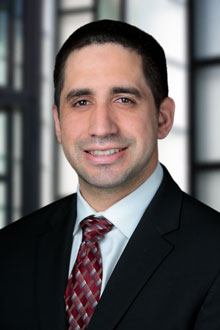In Frlekin v. Apple Inc. (February 13, 2020, S243805)__Cal.5th__, the Supreme Court decided whether employees must be compensated for employer-mandated exit searches of packages, bags, and personal technology devices. The district court ruled compensation for defendant Apple’s employees was not consistent with the definition of “hours worked” under California’s Industrial Welfare Commission wage order No. 7-2001 (“Wage Order 7”) ((Cal. Code Regs., tit. 8, § 1170, subd. 4(B)). However, after the Ninth Circuit certified the question to the California Supreme Court, the California Supreme Court disagreed. (Slip Opn., pp. 1, 5.) A copy of the Supreme Court’s opinion is attached.
As part of a policy to prevent theft, Apple required retail store employees to undergo personal package, bag, or technology checks prior to leaving each store’s premises. (Slip Opn., p. 2.) The baggage checks ranged between 5 minutes on slow days to 45 minutes on busy days. (Id. at p. 3.) Apple required its employees to clock out before undergoing the searches. (Ibid.) Eventually, Apple retail store employees filed a class action lawsuit in federal district court demanding Apple pay them for the time spent waiting for and undergoing personal baggage checks. (Id. at p. 4.) The district court granted Apple’s summary judgment motion, and the case was appealed to the Ninth Circuit. (Id. at p. 5.)The Ninth Circuit requested the California Supreme Court resolve whether the employees should be paid under California’s Wage Order 7. (Ibid.) The Supreme Court agreed to decide the question and subsequently reversed the decision of the district court. (Id. at p. 1.)
Wage Order 7 requires employees to be compensated a minimum wage for all “hours worked.” (Slip Opn., p. 6; Cal. Code Regs., tit. 8, § 1170, subd. 4(B).) Hours worked is defined as “the time during which an employee is subject to the control of an employer.” (Slip Opn., p. 6; Cal. Code Regs., tit. 8, § 1170, subd. 2(G).) The Court began by reaffirming that an employee can be subject to the compensable control of an employer while not actually performing work duties. (Slip Opn., p. 6.) Based on the control language of Wage Order 7, the Supreme Court found Apple’s retail employees were entitled to compensation for the baggage checks. (Id. at p. 7.) Apple controlled the employees during the baggage checks because employees needed to comply with the checks under threat of discipline. The employees were also confined to Apple’s premises during the checks, and the employees performed “specific and supervised tasks while awaiting and during the search.” (Ibid.) This was enough to show that the employees were under Apple’s control while they awaited and underwent baggage checks.
Further, the court held, unlike in prior cases where the employees did not have to be compensated, the baggage checks were neither optional nor meant for the employees’ sole benefit. (Slip Opn, pp. 11-17.) The baggage checks were conducted on Apple’s premises as a condition to employees leaving work. (Id. at pp. 14-15.) Apple argued employees could have avoided the checks if they did not bring any baggage or phones to work. (Id. at p. 14.) However, the court aptly noted Apple had successfully argued iPhones had become a common part of people’s daily lives. (Id. at p. 21.) It would be unfair in the 21st century to bar an employee from bringing a phone to work. (Id. at p. 17.) The baggage checks were also for the sole benefit of Apple because they were meant to prevent the theft of devices. (Ibid.) The court concluded its opinion with a new factor test to be used when analyzing on-site, employer-controlled activities. (Id. at p. 23.) The mandatory nature of the activity is no longer the only important factor to be considered. Lower courts must now additionally examine: “the location of the activity, the degree of the employer’s control, whether the activity primarily benefits the employee or employer, and whether the activity is enforced through disciplinary measures.” (Ibid.)
